Building Code Basics
InspectToProtect Website
Strong Homes Scale
Retrofit Recommendations
Building Code Basics Frequently Asked Questions
How do building codes protect my family and home in a disaster?
Experience shows that people taking refuge in homes built using current model building codes have the best chance of survival during disasters because codes and beyond-code construction practices include resilient building methods that are proven performers when disasters strike. Recent disaster events demonstrate this profoundly, as seen in this powerful video that tells story after story about Florida families and homes that survived recent hurricanes and tornadoes. Building codes also protect your home from non-disaster events like thunderstorms and house fires while saving money through reduced maintenance and increased durability and energy efficiency.
Can building codes save me money?
Yes! Strong building codes save you money by reducing and preventing disaster losses. According to FEMA, structures built using codes are 77% less likely to experience damage. Additionally, they help qualify you for lower homeowners and flood insurance rates because they score favorably on the ISO Building Code Effectiveness Grading Schedule (BCEGS), a score automatically factored into your insurance premium rating. Additionally, modern codes include protective features that may qualify you for insurance discounts and make your home more insurable overall.
Many economic studies validate building code savings. One entitled, Economic Effectiveness of Implementing a Statewide Building Code: The Case of Florida, found that the statewide Florida Building Code reduced windstorm losses by up to 72% and resulted in 5 dollars in losses saved for every 1 dollar of added costs with a payback period of approximately ten years.
Another study by the National Institute of Building Sciences found that buildings designed to meet the 2018 International Code Council (ICC) model code generated a benefit of $11 for every $1 invested.
Does it cost more when you build with building codes?
Building codes may introduce a modest, increased cost at the time of new construction; however, the increase is offset by savings delivered throughout the lifetime of homeownership. Your well-built home is safer, more durable, energy-efficient, and valuable at the time of resale. Further, when the modest upfront cost is included as part of a mortgage, it may amount to as little as pennies per day, making new construction the most cost-effective and efficient time to strengthen buildings.
What are model building codes, and which perils do they address?
Model building codes are created by Standards Developing Organizations and are updated regularly, including incorporating building science advances and changes to underlying engineering standards. Jurisdictions can adopt model building codes and sometimes make amendments that may strengthen or weaken the performance of homes built according to the building code.
The International Code Council (ICC) and the National Fire Protection Association are two major model building code organizations. The ICC develops the International Residential Code (IRC) that governs the construction of approximately 80% of U.S. single-family houses, two-family houses, and townhouses with three or more units. ICC also develops the International Building Code (IBC) that governs new construction of all other types of structures, including multifamily homes like apartments, commercial buildings, and structures outside the scope of the IRC.
While the IRC does not have comprehensive tornado or wildfire-resistant requirements, some provisions can increase safety against these perils. For example, the high wind requirements for windborne debris regions can significantly increase a home's protection from tornadoes. However, tornado winds can exceed the anticipated design wind speeds for high-wind construction measures. For this reason, tornado storm shelters and safe rooms should be considered as they provide near-absolute life-safety protection, even in extreme tornadoes up to 250 mph. The 2024 IBC addresses tornado resilience through a new standard and new requirements.
While the IRC does not comprehensively address wildfire, some provisions increase wildfire protection for homes, including those addressing the spread of fires from house to house. Examples include the IRC provisions on Fire-Resistant Construction (Section R302) and fire ratings for roof coverings. The International Wildland-Urban Interface Code and the Standard for Wildland Fire Protection (NFPA 1140) are two Wildland-Urban Interface (WUI) Codes designed to reduce wildfire risk.
How is the International Building Code used for this site?
The International Building Code is for commercial structures and multifamily housing, such as apartments and structures outside the International Residential Code. The site will provide general structural resilience features that an individual owner or renter could consider for their unit. It will also provide building code history, when available, and a list of previous disasters for the jurisdiction.
Where can I learn more about building codes?
For more information on building codes, visit the FEMA Building Codes Toolkit for Homeowners and Occupants, FEMA Protecting Communities and Saving Money: The Case for Adopting Building Codes, and FEMA Building Codes Adoption Playbook For Authorities Having Jurisdiction.
What is the InspectToProtect Website?
What is the purpose of the Inspect2Protect.org website?
The site helps you learn about the strength of your home by analyzing the presence or absence of construction features necessary for achieving disaster resilience. The site addresses six natural disasters: earthquakes, floods, hurricanes, tornadoes, wildfires, and winter storms.
Who should use the Inspect2Protect.org website?
The site is helpful for anyone interested in a home's potential strengths or weaknesses in the face of disaster and ways they can strengthen the home. The information provided is a starting point, subject to data limitations. Check with your local building department or jurisdiction about the building code that applies to your home, as local amendments often apply.
Always consult a licensed, qualified, experienced architect, engineer, or contractor before beginning a home renovation project.
How does the site work, and what will I learn?
The site information reflects an engineering analysis of different model building codes and features required for disaster resilience. When you enter an address, you will see tabs reflecting your location's top three disaster risks. Each peril includes a page with a 3D house illustration mapped with numbered structural resilience features outlined in red or green to indicate the presence or absence of each feature. Individual 2D retrofit illustrations with text, video links, and resources appear below the house, along with code and disaster history for the location.
What can I learn if I don’t enter my address?
If you enter your city and state, the site will indicate the top three disaster risks and model code incorporated by that city and state. You will also see the location's building code adoption and disaster history when available, along with a generic list of structural resilience recommendations that are not correlated to your specific address.
Will the website indicate the building code adopted when my home was built?
Yes, subject to data limitations, the site will indicate the model building code your jurisdiction adopted when your home was built, but it may not reflect local or statewide amendments. Check with your local building department or jurisdiction about the building code that applies to your home to identify any changes made at the local level.
What are the data sources for this website?
The data provided on this website is derived in whole or in part from publicly available, individually researched, and source-provided data, including "as is" data via the Zestimate API.
Questions About the Strong Homes Scale
How does the “Strong Homes Scale” work, and what does the rating mean?
A 2024 behavior-focused study confirmed what most in the construction field already know: many consumers do not understand the critical role that building codes play in creating a disaster-resistant home. The finding is part of a national effort conducted by the nonprofit Federal Alliance for Safe Homes – FLASH to connect with homebuilders and homeowners, identify knowledge gaps, and create solutions to increase code acceptance.
One of the most notable study findings is that homebuyers' priority for the "sturdiness of construction" continues to rise. However, survey respondents did not make the connection between strong building codes as the delivery system for a resilient home.
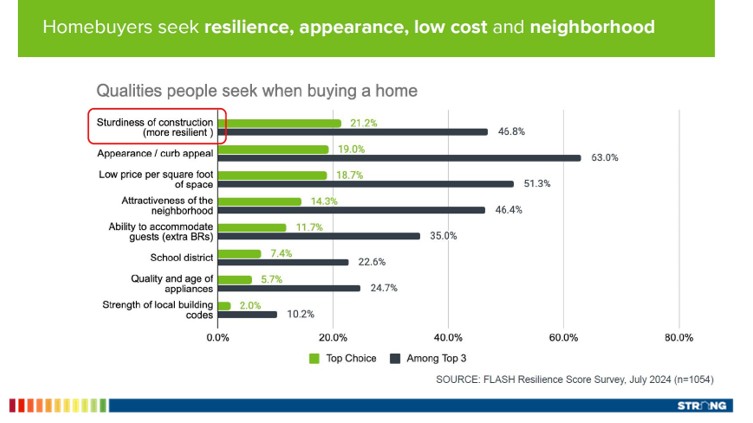
To meet this challenge, FLASH and partners created the new "Strong Homes Scale" (Scale) and added the tool to the building code transparency website, Inspect2Protect.org. The Scale indicates how close a home is to meeting or exceeding the resilience features included in the 2024 International Residential Code. This allows the users to develop a framework for understanding how well their home can withstand six major natural disasters – including earthquakes, floods, hurricanes, tornadoes, wildfires, and winter storms.
For each of the six hazards, there is a checklist of approximately 7–11 key structural features that make a home resilient to each hazard, including roof-to-wall anchoring for hurricanes or foundation reinforcement for earthquakes.
How does the Scale work?
After you enter an address, the Scale uses Zillow data to establish the year built. It then combines the year the home was built with an engineering analysis of the building code at the time and estimates which features the home likely has or lacks. In essence, it compares the building requirements in place when the home was built to a list of essential resilience features from modern codes.
These labels describe how your home compares to modern resilience benchmarks:
- Vulnerable: Indicates the home is likely below current safety standards – typical of older houses built before modern building codes or without later retrofits. Such a home may lack many key protections and be at a higher risk in the event of a disaster.
- Good: Indicates the home meets key elements of the minimum model building code relating to resilience against each of the six major disasters. A "Good" rating indicates that the home possesses the core resilience features required by current codes, providing a solid baseline of protection.
- Best: Indicates the home has the highest level of disaster resilience – it includes all major recommended features relating to each of the six major disasters identified by an engineering analysis, even beyond the code requirements. This is a top-tier rating.
The presence of a feature earns a "green check" and its absence a "red X." The combined results of all features then determine where a home falls on the rating spectrum, ranging from "Vulnerable" to "Good" and "Best." A home with most of the recommended features will score toward the "Best" end, whereas missing many features will push the rating toward "Vulnerable."
The Scale is interactive, so users can check any features or upgrades completed since the original home construction or those features required by state or local codes to see how those upgrades move the Scale closer to "Best." Examples include adding hurricane shutters, re-roofing with an enhanced nailing pattern to resist high winds, sealing the roof deck, or adding insulation to prevent ice dams.
What features are on the Inspect2Protect.org website in addition to the Scale?
- Custom Building Code Lookup for International Residential Code (IRC)
- Custom Building Code Lookup for International Building Code (IBC)
- Building Code Resilience Story Video
- Peril-Specific Retrofit Suggestions
- Comprehensive 3D and 2D Illustration Library
- Printable Checklists for Six Hazards
- Links to Technical Resources
- Disaster History Insights
- FAQ's and Checklists
The scale provides information about improving resilience, but it cannot capture every factor influencing your home's performance against a disaster. That is why it is crucial to conduct a custom home inspection to determine the exact features of your home before undertaking a retrofit project.
Check out the Scale today and begin your journey to answering the question, "How Strong is My Home?" For more information about the Scale, email Info@Flash.org today.
How do I know which weather perils are common where I live?
After you put in an address, the site will show tabs for the top three perils, and you can click back and forth to see the retrofit recommendations for each one. The weather perils are generated based on the National Risk Index.
How can I use the Strong Homes Rating Scale?
The Strong Homes Rating is an information-only analysis of your home designed to help you understand your home's strength and potential to survive the disasters common where you live. It is not intended as a standalone tool. Check with your local building department or jurisdiction about the building code that applies to your home and identify any local amendments. Consult a licensed, qualified, experienced architect, engineer, or contractor before beginning a home renovation project.
How do building codes factor into the rating?
The site uses an engineering analysis that compares building code data for each model year of the International Residential Code (IRC) and the structural features included in that code version against a list of essential features that make homes resilient. It does not reflect local amendments that may weaken or strengthen the code.
Check with your building department or jurisdiction about the building code that applies to your home to identify any changes made at the local level.
Can I adjust my Strong Homes Rating to reflect updates and retrofits to my home?
Yes. You can click or unclick individual features to see how they affect your rating. The more green-checked features, the closer your rating will move to "Best." If you change the features to denote a red X, your rating will move closer to "Vulnerable."
Questions About Structural Resilience Features & Retrofit Recommendations
How can I protect my home from earthquakes?
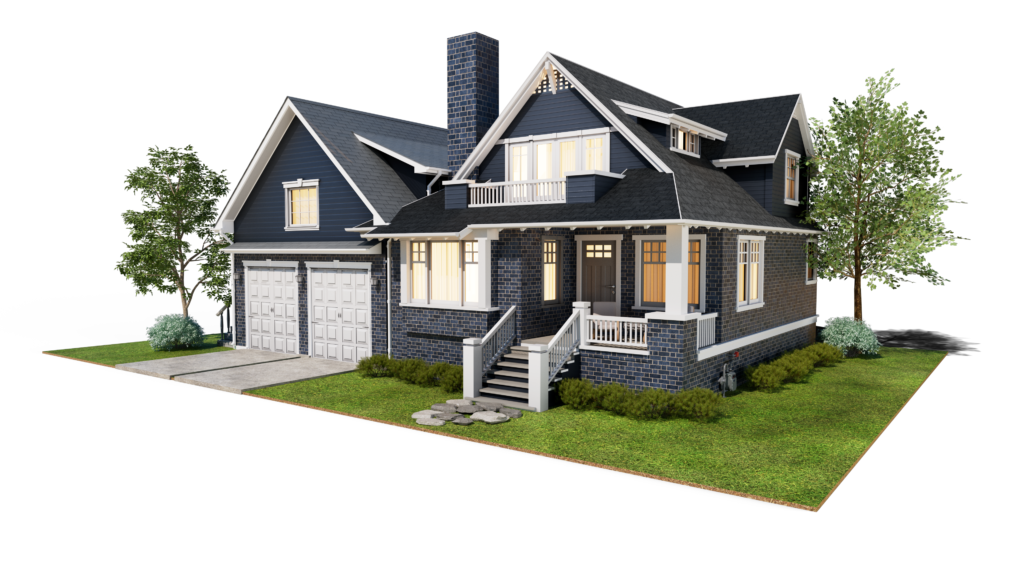
You can make your home stronger in the face of earthquakes by retrofitting, renovating, and making upgrades, including:
- Brace and strap water heaters
- Strengthen soft and weak story construction
- Upgrade foundation connections
- Upgrade brick masonry chimneys
- Improve anchorage of masonry fireplace surrounds
- Reinforce cripple walls
- Install an automatic gas shutoff valve
- Strengthen unreinforced masonry walls
- Strengthen anchorage to uphill foundation of hillside dwellings
- Reinforce crawl spaces
How can I protect my home from floods?
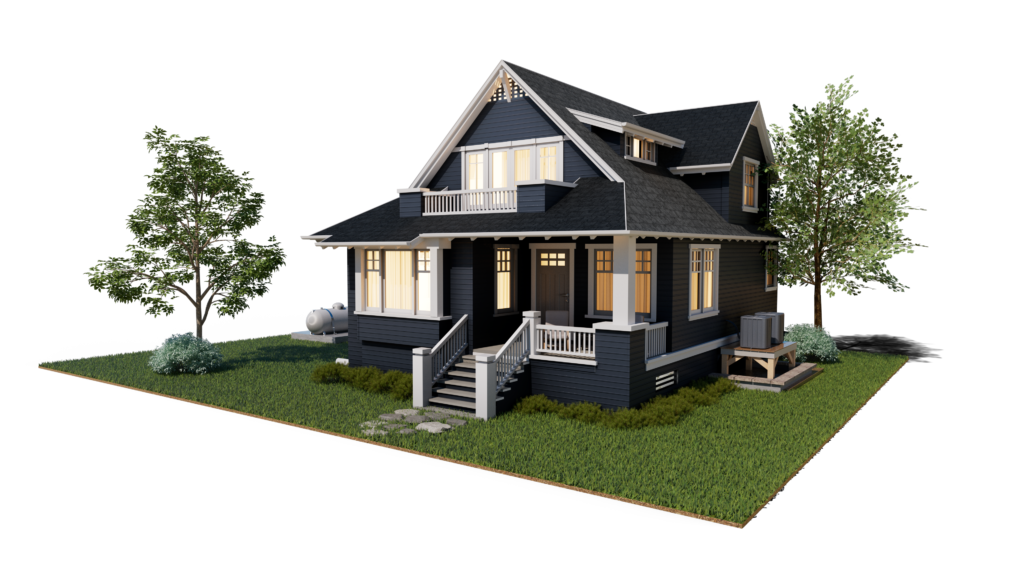
You can make your home stronger in the face of floods by retrofitting, renovating, and making upgrades, including:
- Anchor fuel tanks
- Add a sump pump with backup power
- Elevate the lowest floor
- Install a backflow valve
- Install flood vents
- Improve basement/foundation wall drainage
- Protect utilities and mechanical equipment by elevating and strapping
How can I protect my home from hurricanes?
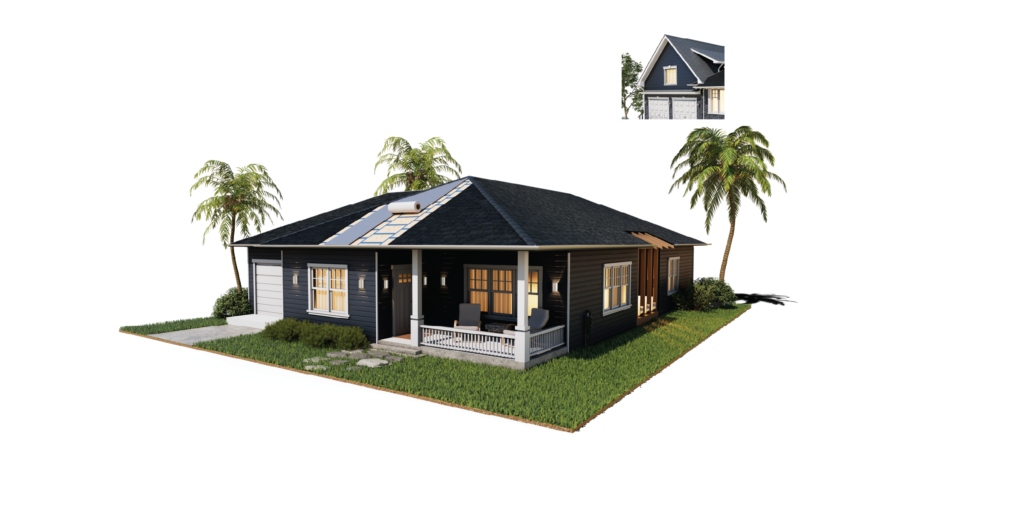
You can make your home stronger in the face of hurricanes by retrofitting, renovating, and making upgrades, including:
- Install pressure- and impact-rated garage doors
- Install impact-rated windows and doors
- Strengthen roof deck attachments
- Seal the roof deck
- Brace soffits
- Improve the anchorage of attached structures
- Upgrade to high-wind-rated roof covering
- Strengthen roof-to-wall connections
- Strengthen foundation connections
- Brace gable-end roofs
How can I protect my home from tornadoes?
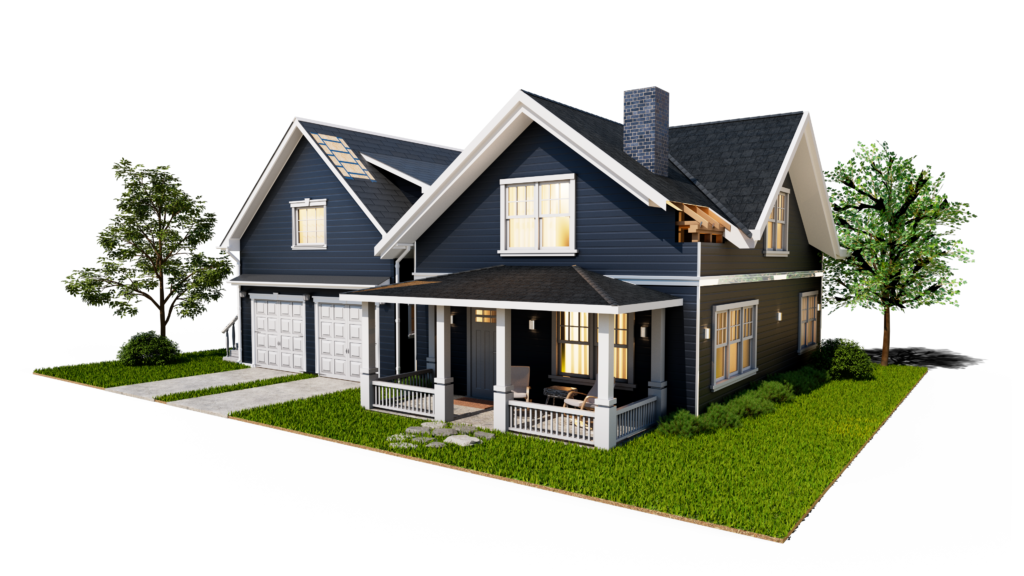
You can make your home stronger in the face of tornadoes by retrofitting, renovating, and making upgrades, including:
- Install pressure- and impact-rated garage doors
- Brace gable-end roofs
- Strengthen roof deck attachment
- Seal the roof deck
- Install impact-rated windows and doors
- Improve the anchorage of attached structures
- Upgrade brick masonry chimneys
- Strengthen roof-to-wall connections
- Installing a safe room
- Brace soffits
How can I protect my home from wildfires?
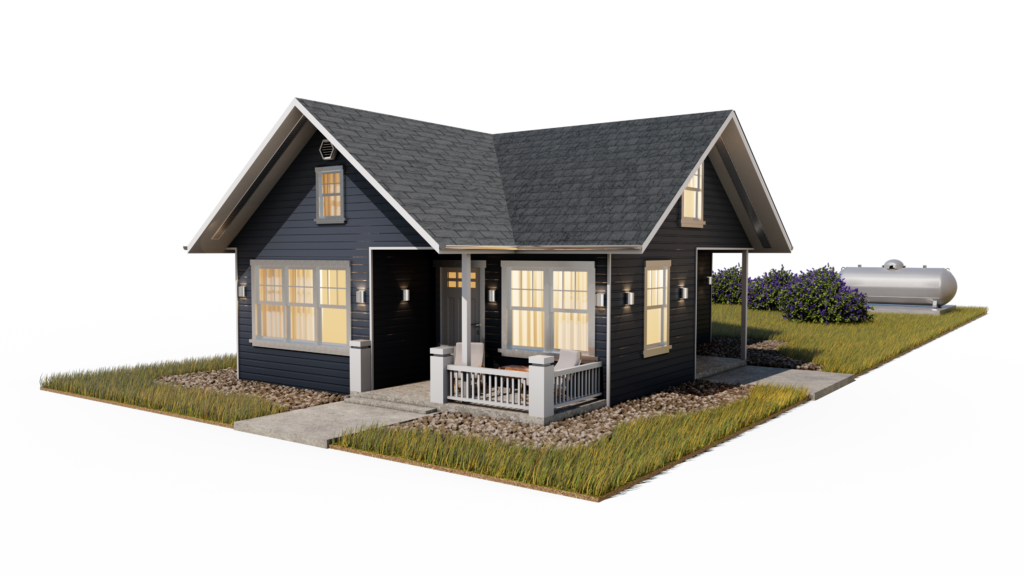
You can make your home stronger in the face of wildfires by retrofitting, renovating, and making upgrades, including:
- Replace non-metal vent materials
- Cover vents with wire mesh
- Upgrade to noncombustible siding
- Install a fire-resistant roof cover
- Upgrade to heat- and flame-resistant windows
- Install non-combustible (metal) leaf guards over gutters
- Install residential house sprinklers
- Protect eaves, overhangs, and soffits
- Move fuel tanks at least 30 feet away
How can I protect my home from winter storms?
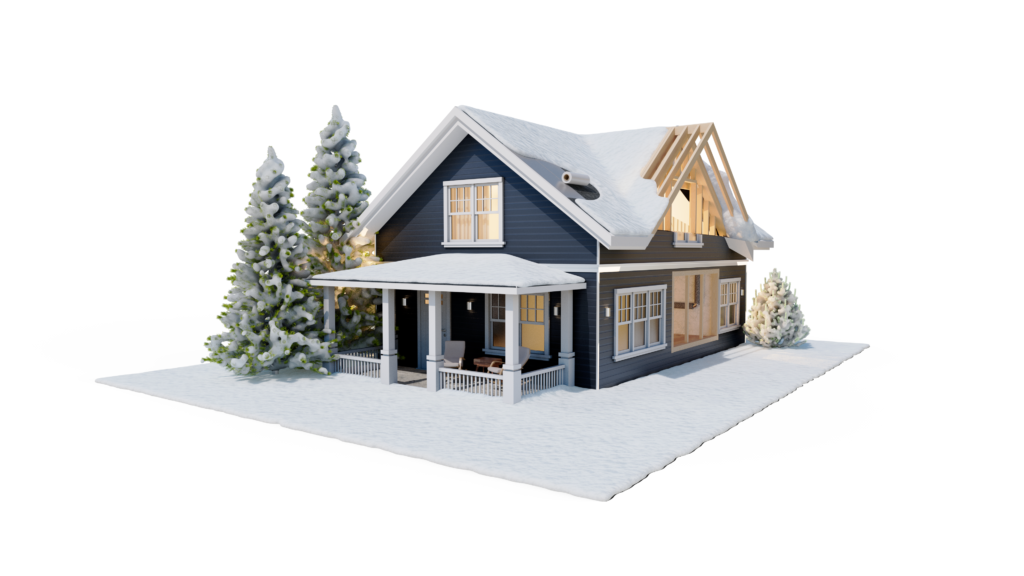
You can make your home stronger in the face of winter freeze and storms by retrofitting, renovating, and making upgrades, including:
- Upgrade wall insulation
- Insulate and seal attic openings
- Install ice barrier on the roof
- Seal wall openings
- Install double-pane windows and doors
- Reinforce roof framing
- Upgrade attic insulation
- Insulate pipes
- Relocate water heater from attic